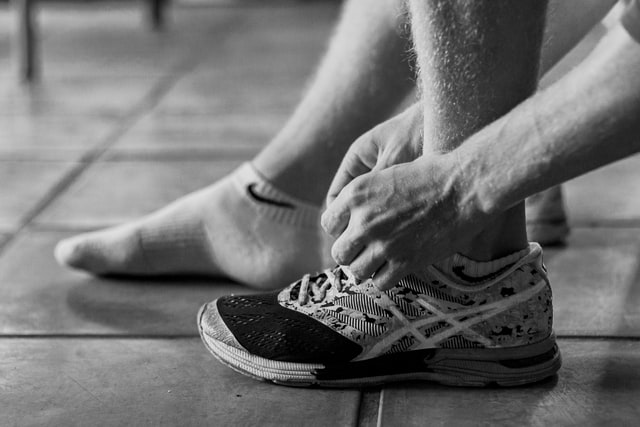Many individuals view ankle unsteadiness as simply another aspect of aging or a symptom of arthritis. While instability and arthritis are related and often coexist, they are not one and the same. If you question why your ankle gives out with pain, this post examines the differences between the two conditions, as well as the consequences of leaving instability untreated.
Why Your Ankle Gives Out With Pain
Are you struggling to put a name to your condition or examine why your ankle often collapses when you move? Chronic ankle instability (CAI) is a likely culprit.
CAI disrupts how the joint is held together when we try to walk, climb, and squat, for example. Your joint is designed to receive and transmit pressure while minimizing joint shear, compression, and compensation. Chronic ankle instability disrupts that process, altering the balance between your feet and the rest of your body.
To discover the causes of CAI, be sure to read our last blog article.
The Link Between CAI and Arthritis
While the two conditions are separate, chronic ankle instability has the significant potential to cause arthritis, particularly Osteoarthritis. When CAI is left untreated, the joint shear and constant compression are what trigger the Osteoarthritis process.
Osteoarthritis is a natural response initiated by our immune systems — your body is attempting to stabilize an area by laying down more bone in that area. The nervous system listens to incoming sensory information from the ankle joint. If it detects too much motion, it signals the immune system to get to work.
Unfortunately, the bone cells that make the new bone growth do so rather haphazardly, resulting in bone cysts and bone spurs (osteophytes), which are all components of Osteoarthritis.
Ankle Instability vs. Arthritis
Characteristics
The nature of each condition is quite different, though both tend to cause pain, stiffness, and swelling. In general, ankle arthritis is characterized by inflammation that accompanies the loss of cartilage between your bones. Ankle instability is primarily characterized by repetitive episodes of the ankle collapsing.
Pain
The type of pain you experience due to arthritis is often a deep, dull, or pulsating ache that frequently reappears. However, pain resulting from ankle instability tends to be sharp and immediate, especially when you attempt to climb stairs or walk on uneven floors.
Causes
Arthritis may result from any number of factors, such as infection, trauma, disease, or wear and tear. Osteoarthritis, for instance, tends to result from repetitive movements occurring across poor joint alignment, creating “friction and sheer,” AKA wear and tear. Inefficient movement patterns or habits develop to compensate for the misalignment, and with each birthday, minor arthritis grows and expands into severe osteoarthritis. On the other hand, chronic ankle instability often stems from a traumatic injury, such as a poorly healed ankle sprain.
My Ankle Gives Out With Pain. What Can I Do?
To prevent chronic ankle instability from progressing into an arthritic condition, your first step is to find a practitioner that is deeply familiar with somatic education. An approach like the Feldenkrais Method, for instance, could provide you with much needed relief that interrupts inefficient movement patterns and prevents future injuries.
As a co-creator of Integral Human Gait theory and a certified Feldenkrais practitioner, I welcome your questions about these somatic modalities. To get in touch for a virtual or in-person appointment, you can reach me at 812-344-4119.

